

A problem shared is … a launch pad for social learning. What’s the key to making social learning work in the workplace?
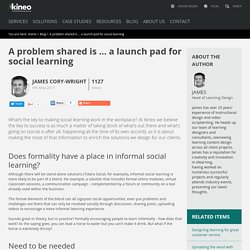
At Kineo we believe the key to success is as much a matter of taking stock of what's out there and what's going on (social is after all, happening all the time of its own accord), as it is about making the most of that information to enrich the solutions we design for our clients. Does formality have a place in informal social learning? Although there will be stand-alone solutions (Totara Social, for example), informal social learning is more likely to be part of a blend. For example, a solution that includes formal online modules, virtual classroom sessions, a communication campaign - complemented by a forum or community on a tool already used within the business. The formal elements of the blend can all signpost social opportunities, even put problems and challenges out there that can only be resolved socially through discussion, sharing posts, uploading videos to encourage a more informal learning experience.
Top eLearning Learning CLO Software Simulation Content for Week of Nov 12 - Nov 18, 2016. A place to explore new ideas in Learning. A Spotify for Lifelong Learning – Sandhya Hegde – Medium. It’s no secret that there is an engagement issue in edtech.
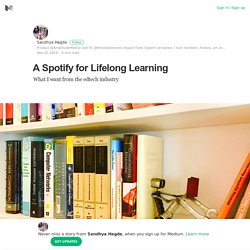
Anecdotal evidence suggests that most online courses have 3–7% completion. There’s also a large mismatch between consumer expectations (“I will become an expert in Python in a few hours”) and what these platforms deliver. Hopefully, as awareness grows about the immense value of lifelong learning and the commitment it deserves, this latter problem will disappear.
Meanwhile, how do we build a more engaging learning experience online? Like many others, I have registered on several online platforms and downloaded many apps for courses, skills and languages I would like to learn more about— Coursera, Udacity, Udemy, CodeAcademy, Duolingo and Stanford Online just to name a few popular ones. While most of these platforms do some hard things well, they often fail to impact a vast % of self-selected users who want to learn X, sign up for X and yet don’t — including myself. Lesson #1: The perfect bite size of content. Listening – social learning’s most important skill? When thinking about the skills of a 21st century learner the emerging skills of curation and networking might come to mind; or you might draw on ideas around participatory culture such as Jenkins’ (2009) core media literacies: Following the recent work of Wise, Hausknecht and Zhao (2014), perhaps we should add listening to this list as we understand more about the skill of digital listening.
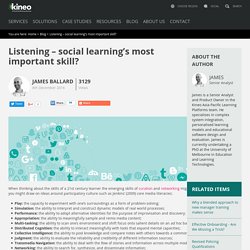
Similar to my recent reflections, Wise et al also argue that labels such as ‘lurkers’ or ‘readers’ are not appropriate metaphors for social learning and instead they introduce the ‘listening’ metaphor with appropriate associations to face-to-face conversations. Listening is a complex cognitive process and a mode of active, rather than passive, learning and so fits in well with some of the participatory concepts above. Using Slack to Engage Learners. Self-Directed Learning or Self-Directed Performance? Stumbled over a couple of great reads this week that flung a craving on me to share a few thoughts.
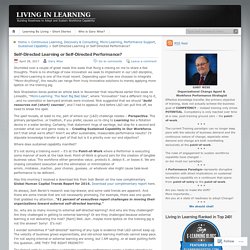
There is no shortage of new innovation we seek to implement in our L&D discipline, and Micro-Learning is one of the most recent. Depending upon how one chooses to integrate “Micro-Anything”, the results can range from truly innovative solutions to merely applying more lipstick on the training pig. Nick Shackleton-Jones posted an article back in November that resurfaced earlier this week on LinkedIn, “Micro-Learning: The Next Big Bad Idea”, where “innovation” had a different ring to it, …and no cosmetics or barnyard animals were involved. Nick suggested that we should “build resources not (short) courses”, and I had to applaud. And before L&D can pull this off, we need to break the spell. Why A Hands-Off Approach to Learning Is Best. What’s the best way to help employees gain the important skills they need to help your organization grow?
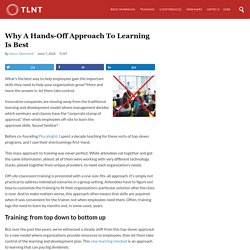
More and more the answer is: let them take control. Innovative companies are moving away from the traditional learning and development model where management decides which seminars and classes have the “corporate stamp of approval,” then sends employees off-site to learn the approved skills. Sound familiar? Before co-founding Pluralsight, I spent a decade teaching for these sorts of top-down programs, and I saw their shortcomings first-hand.
This mass approach to training was never perfect. Off-site classroom training is presented with a one-size-fits-all approach. Training: from top down to bottom up But over the past few years, we’ve witnessed a steady shift from this top-down approach to a new model where organizations provide resources to employees, then let them take control of the learning and development plan. Paul suggests this is exactly how employees should learn new skills. 7 Social Learning Activities That Are A Perfect Fit In Online Training - eLearning Industry.